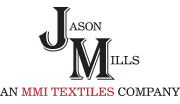Assessing the Quality of Polyester Mesh
Evaluating the quality of the polyester mesh is essential in selecting a suitable material for golf impact screens. Two primary factors to consider are mesh density and yarn strength. Mesh density refers to how closely the yarn is knit together. A higher density indicates a tighter, cleaner, flatter fabric that is less prone to tearing.
Meanwhile, the yarn strength is the ability of the strands to withstand tension and resist damage. A higher yarn strength indicates a more robust and durable mesh that can endure the forceful impact of golf balls without breaking. Consequently, choosing a material with strong yarn ensures long-term durability and performance, providing a reliable barrier against golf ball impacts.

